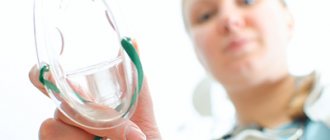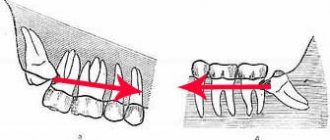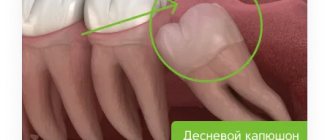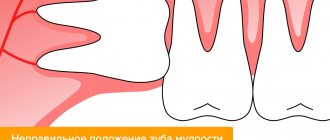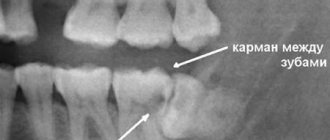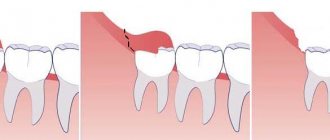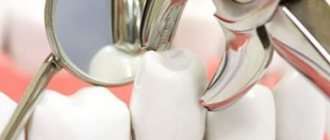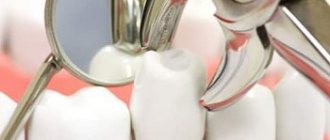Indications for removal
Medical indications can be divided into 4 main groups.
- Crowding of teeth When even one figure eight erupts in the dentition, crowding occurs in 8 cases out of 10, and promises dire consequences. At contact points, i.e. between teeth, hygiene is compromised, and caries forms. Tooth displacement leads to gum recession and bone loss, especially in the anterior region. Pathology leads to the loss of up to 10 teeth by the age of 40.
- Destruction of wisdom teeth The inaccessibility of the eighth teeth to a toothbrush leads to a natural result - first caries develops, then pulpitis and acute pain. Treatment in advanced cases is not far-sighted, because the probability of relapse is too high, and such a tooth is already useless for future hypothetical prosthetics. Removal is more efficient and cheaper.
- Growing difficulties The eruption of eights is not “prepared” by the pioneer milk teeth. That is why the process of their birth is painful and navigationally unpredictable. Wisdom teeth destroy the roots or crowns of the 7th teeth, grow into the cheek, and compress the trigeminal nerve.
- Orthodontic preparation It is almost always impossible to straighten teeth and form a healthy bite using braces or aligners without removing figure eights - there is not enough space for teeth to move. Orthodontic referral is the most common reason for immediate removal.
How to remove – one at a time or “in bulk”? It is important to understand that from a medical point of view, there is absolutely no reason for the patient to remove wisdom teeth one by one.
How is the recovery going?
Painful sensations persist for several days and can be quite strong, so pharmacological painkillers are prescribed. Swelling is almost always observed, which goes away on its own. It is important to prevent the appearance of alveolitis when a blood clot is displaced or washed out. It is necessary in order to eliminate the risk of wound infection, and to preserve it you need to:
- refrain from consuming food or liquid for the first two hours;
- do not rinse the hole and do not rinse your mouth for the first few minutes;
- do not smoke for the first two days;
- chew on the opposite side;
- Do not drink drinks through a straw.
Depending on the situation, rehabilitation lasts about a week. Painful symptoms, swelling and fever during this period are considered normal and gradually go away. If, on the contrary, they increase, you need to seek professional help.
Should I delete everything at once or one at a time?
Simultaneous removal of all “eighth” teeth at once has a number of pronounced advantages over “multiple” ones. Let's compare! For clarity, we will combine all the pros and cons in a table.
| One by one | All wisdom teeth at once |
| Efficiency When any tooth is removed, the neighboring and antagonist tooth begins to move. We delete one at a time - the displacement occurs 4 times. Increased risk of loose teeth, gum recession, and bone damage | Efficiency Movement in the dentition occurs simultaneously and is quickly “compensated”, i.e. stops and does not progress. Your orthodontist will tell you “Thank you!” |
| Medicines Antibiotics will have to be taken after each removal; this is not obvious at first glance, a very serious obstacle | Medicines Medicines are taken only once, which is especially convenient in the presence of concomitant diseases |
| Stress Obviously, four visits to the doctor, especially for the purpose of removal, are four reasons for unnecessary worries | Stress The operation is performed “in your sleep” under sedation - there is no fear, no pain, no unpleasant memories |
| Time management Call the clinic administrator 4 times and adapt to the surgeon’s schedule, spend 6-8 hours in traffic jams, plus 4-10 hours in the chair | Time management Choose a convenient time only once, go to bed, go home after 3-4 hours, having rested and slept |
| Safety In the “tooth by tooth” format, the temptation to remove it where it is cheaper is sometimes too great. Most complications are the result of removal at the “Anywhere” clinic | Safety Such operations can only be carried out in maxillofacial surgery with a very high level of equipment, qualifications and responsibility. There is absolutely no threat to your life and health here. |
Ordinary dental clinics recommend removing wisdom teeth one at a time due to insufficient equipment , starting with the anesthesiology department, ending with the sterility of the instruments and the operating units themselves, and the unconvincing qualifications of the doctors.
The topic of wisdom teeth removal is shrouded in a dense veil of fears, doubts and concerns that small private clinics willingly support.
Preparatory activities
In order to calculate the volume of intervention and plan it correctly, an x-ray is required, which allows:
- obtain a clear image of the jaw and determine its condition;
- study the position of the root part and its features;
- determine the volume of resorption;
- diagnose the presence of a cyst, fistula or tumor.
In addition, the patient will need a test for individual intolerance to anesthesia, excluding other contraindications. If he is diagnosed with caries or other dental diseases, they are pre-treated in order to eliminate any lesions in the oral cavity that contribute to infection of the wound. For the same purpose, professional hygienic cleaning is carried out, eliminating solid deposits and plaque, the presence of which provides a favorable environment for the development of pathogenic microorganisms.
Myths, or why is deleting all eights at once so scary?
What are the most common concerns that patients have about having all their wisdom teeth removed at once?
This is traumatic.
Multiple removals create an extensive wound surface, secondary infection will certainly occur, large loss of blood will take a long time to heal, etc. and so on.
- Reasons You will truly remember the classic “punitive” removal using a drill, elevators, forceps, as well as a saw and chisel for the rest of your life.
- How to avoid Modern high-class maxillofacial surgery uses only piezosurgical ultrasound devices (PiezoSurgery) . A special “scalpel” affects only hard tissues and automatically turns off upon contact with soft tissues - gums, nerves, blood vessels, etc. Trauma is reduced to zero, and the speed of removal increases by 2 times, there is no blood, the bone around the tooth remains intact and unharmed, and the tooth tissue does not heat up.
- Summary Removal using ultrasound eliminates trauma by 99%.
It hurts.
The anesthesia may not work, and the next day it will be simply impossible to open your mouth, swelling, bruises, cramps occur, eat strictly through a straw, etc.
- Causes of Pain during and after surgery are directly related to removal methods. Traditional “strong” surgery does require increased pain relief at the time of removal and often causes pain in the postoperative period.
- How to avoid Removing wisdom teeth under sedation in a combo protocol with the simultaneous administration of anesthetics 100% eliminates pain during surgery and the formation of microspasms in the jaw muscles, which makes it difficult to open your mouth the next day. Piezosurgery reduces trauma by several orders of magnitude. A proprietary rehabilitation program, including microcurrent and PRP therapy, completely relieves postoperative discomfort, including cosmetic discomfort. Medicines, antibiotics, antihistamines and painkillers must be taken strictly in accordance with the recommendation of the dentist.
- Summary The use of Piezosurgery in conjunction with sedation provides absolute comfort during and after surgery, provided that the doctor's instructions are followed in the postoperative period. For those who are not ready for a moment to change their quality of life after treatment, a proprietary rehabilitation program is available.
This is a long time.
Being in a chair for 2-4 hours without moving with your mouth open is a physically difficult task even for a superman.
- Causes Complex removal of one wisdom tooth often takes 1-2 hours. Horizontal location, incomplete eruption, proximity of the roots to the maxillary sinus or trigeminal nerve, all these features of the growth of the eighth tooth will require additional manipulations and time expenditure by the surgeon.
- How is PiezoSurgery solved? The duration of removal of impacted or dystopic teeth using piezoelectric methods is reduced by at least 2 times. But, nevertheless, the operation is still planned at the rate of 1 tooth = 1 hour. We remove 3 out of 4 teeth in 1 hour, but the last one may take 2 or even 3 hours. These are the statistics. Is there a solution? Yes - sedation. Sedation. Artificial sleep caused by the administration of propofol-based drugs, such as diprivan. In the USA and European countries, surgical treatment in dentistry is carried out while asleep, under sedation. This is the "gold standard". You arrive at the clinic to have your teeth removed at 10 am, the anesthesiologist administers the drug and you fall asleep. Doctors and assistants perform the operation. At 2 o'clock in the afternoon the doctor wakes you up, takes you for a check-up, then drinks tea and you can go home. No pain, no medical smells, no bad memories. Only positive emotions.
There will be complications.
On the upper jaw - perforation of the maxillary sinus, on the lower jaw - the trigeminal nerve will be affected, paresthesia.
- Causes The roots of the upper teeth, starting with “fours” and ending with “eights,” are located in close proximity to the maxillary sinus. In 60% of cases, the roots “lie” directly in the sinus. Rough or hasty removal without diagnosis will lead to the formation of a message between the GP and the oral cavity - food and liquid from the oral cavity begins to enter the sinus. The consequences are, to put it mildly, serious. The lower wisdom teeth are almost always located near the trigeminal nerve. When removed, the nerve is often damaged either during the extraction process or when local anesthesia is administered with a needle. It manifests itself as a feeling of numbness in the lower part of the face, loss of taste.
- How to avoid The choice of institution for surgical intervention should be taken seriously. Removing any teeth “anywhere” is strictly prohibited! Only in maxillofacial surgery is it possible to remove complex teeth with a 100% predictable result. A computed tomography scan in a special ENT mode allows us to determine the position of the tooth roots, including in relation to the maxillary sinus. Based on the image, the surgeon determines the tactics for removing each tooth. 3D tomography of the jaw and sinuses is displayed on the screen in the operating room and is in front of the surgeon’s eyes during the operation, this guarantees error-free manipulations.
Removing wisdom teeth in stage 1 is an ordinary routine event for our surgeons. At the Doctor Levin center, the most complex maxillofacial and ENT operations are performed daily: restoration of jaw bone tissue, bilateral sinus lifting, single-stage implantation, removal of foreign bodies from the maxillary sinus.
My life's goal is to create the best oral and maxillofacial clinic in the world.
Rehabilitation of all teeth at once in 1 visit. In your sleep, without stress, pain and unpleasant memories. Filigree planning and an integrated approach to maintaining the health and quality of life of the patient.
Levin Dmitry Valerievich Chief physician and founder of the Doctor Levin center
Is general anesthesia necessary?
Many people ask this question, wanting to know which option is best for them. Most often, local anesthesia is used (it is quite enough to eliminate discomfort). However, there are a number of cases when it is impossible to do without a general one. This happens if a long operation is ahead or the patient has an allergic reaction to local agents, he has an unbalanced psyche, and is terrified of intervention.
The dose is selected individually. It shouldn't be too small or too big. During its action, the nervous system switches off and the person falls asleep. Administration can be carried out by injection or inhalation using a special mask.
Quality standards of the Doctor Levin center
Surgical operations, including multiple tooth extractions, in our Center are carried out in the LifeTime Warranty format, in strict accordance with the Center’s Unified Quality Standards.
An operation to remove all third molars in one day is possible if the following necessary conditions are met in the clinic : 3D computer diagnostics in ENT mode, a full-fledged anesthesiology department, thorough sanitation of the oral cavity, ultrasound surgical equipment, experienced adult surgeons on staff and professional postoperative service.
Simultaneous removal of 2 or 4 wisdom teeth
Extracting two eights at once from one side is a productive tactic. Two units are removed at once, and restoration and regeneration takes place once. Unpleasant sensations and discomfort go away in one go. Restoration of the oral cavity is not complicated in any way by a one-time removal. An effective approach that we mainly advise the patient.
Extracting all 4 wisdom teeth at once is extremely rare. It can only be recommended if the patient is very afraid and under general anesthesia. Regeneration is very difficult, consuming food is much more difficult.
Diagnostics using a computed tomograph with ENT mode
Accurate diagnosis before extraction is a necessary condition for eliminating complications. The Center uses a Sirona Galileos dental tomograph (Germany).
- an accurate picture of the location of teeth, canals and roots
- ENT mode with the ability to diagnose sinuses
- using a 3D image of the jaw during surgery
The choice of a doctor to remove teeth, especially complex ones, should be taken extremely seriously. Average surgeons usually do not stand on ceremony during the procedure. The result of an operation carried out in a hurry, without proper preparation and adherence to gentle removal measures - bone structures of the jaw broken in pieces, wandering remains of roots, unremoved cysts growing into the maxillary sinus, perforations, fistulas, osteomyelitis and much more. Not to mention the shocking post-operative pain that overtakes the patient after such punitive surgery. Entrust removal to an oral and maxillofacial surgeon. Only the maxillofacial surgeon has enough theoretical and practical skills to perform tooth extraction without complications.
Our doctors
7 years experience
Exuzian
David Samvelovich
Dental surgeon-implantologist.
Moscow State Medical and Dental University, specialty “Dentistry” - 2013
Implantation surgeries, bone grafting, sinus lifting, tooth extraction of any complexity, any surgical procedures.
More about the doctor...
10 years of experience
Makushkin
Anton Alekseevich
Dental surgeon-implantologist.
Graduated from the Russian State Medical University named after academician I.P. Pavlov in 2009.
From 2009-2010, intern at the Department of General Dentistry and Anesthesiology of the A.E. Evdokimov Moscow State Medical University. from 2010-2012, resident at the Department of Faculty Surgical Dentistry and Implantology of the A.E. Evdokimov Moscow State Medical University. from 2012-2015 postgraduate student of the Department of Surgical Dentistry and Implantology of the A.E. Evdokimov Moscow State Medical University.
More about the doctor...
